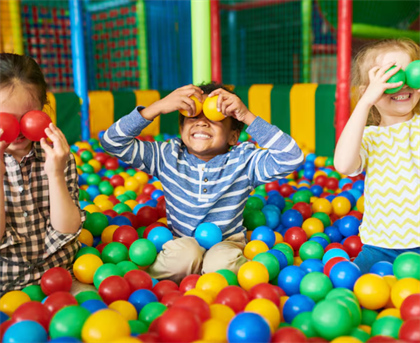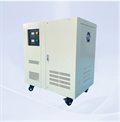
The UK Soft Play Centre as a Developmental Landscape: An Analysis of the 'Wonderland' Model
November 18, 2025
The modern UK soft play centre, often conceptually themed around terms evoking fantasy and exploration such as Wonderland, serves a significant function in childhood development, particularly given the variable British climate. These facilities are fundamentally indoor, multi-tiered environments engineered not merely for leisure, but for the focused progression of physical, cognitive, and social skills in children aged typically between 1 and 10 years.
This article examines the structural design, developmental advantages, and functional role of these environments, treating the "Wonderland" concept—a generic term for an immersive, imaginative play space—as an exemplar of the typical contemporary soft play facility across the United Kingdom.
I. Structural Engineering and Safety Standards
The soft play centre’s primary characteristic is its engineered safety, built around rigorous standards. In the UK, the design and construction of this equipment must conform to European standards (e.g., BS EN 1176 and BS EN 1177), which govern playground equipment and surfacing. This regulatory framework ensures materials are non-toxic, structures are stable, and impact surfaces are adequately rated.
A typical 'Wonderland' centre comprises several structural zones:
The Multi-Tiered Frame: This is the core structure, featuring interconnected platforms, tunnels, and crawl spaces constructed from steel framework and heavily padded with foam and vinyl. The height and complexity are scaled according to age groups, ensuring appropriate levels of challenge and reducing the risk of collisions between different physical capabilities.
Obstacle Courses: These segments integrate elements like roller squeezes, punch bags, swinging bridges, and cargo nets. These elements are designed to introduce measured resistance and instability, crucial for vestibular development (sense of balance) and proprioception (awareness of body position).
Ball Pits and Slides: The ball pit provides a unique environment for tactile stimulation and controlled falling, promoting gross motor skills without impact risk. Slides, varying in steepness and length, help children regulate speed and understand gravitational forces in a dynamic, exciting context.
The deliberate use of soft, pliable materials across the entire floor and equipment surface allows children the freedom to test their physical boundaries—an essential component of physical self-assessment and confidence building—without the high risk associated with hard, outdoor surfaces.
II. The Physical Development Matrix
The activities within the soft play environment inherently target the primary areas of physical development necessary in early childhood:
A. Gross Motor Skills and Coordination
The spatial requirements of navigating the play frame demand high levels of coordination. Activities such as climbing nets and scaling levels require the simultaneous, coordinated use of limbs and core muscles. This continuous, self-directed physical activity is crucial for:
Muscle Development: Strengthening the major muscle groups of the legs, arms, and trunk, forming the foundation for sustained physical activity and endurance.
Cardiovascular Health: The sustained period of high-intensity play—running, jumping, and chasing—provides necessary aerobic exercise, contributing directly to cardiovascular fitness.
B. Fine Motor Skills and Sensory Integration
While gross motor skills dominate, the manipulation of smaller elements (e.g., foam blocks, ropes, and netting) engages fine motor skills and the pincer grip. Furthermore, the diverse sensory input—the friction of netting, the softness of foam, the resistance of the roller squeeze—supports sensory integration, helping the child's nervous system process and respond to environmental stimuli efficiently.
III. Cognitive and Executive Function Stimulation
Beyond the physical, the soft play structure functions as a complex, three-dimensional spatial puzzle that provides rich cognitive stimulation.
A. Spatial Reasoning and Planning
Navigating the multi-level maze requires the child to utilize spatial reasoning to determine pathways, gauge distances, and remember routes. This continuous engagement promotes executive functions, particularly:
Planning: Deciding which route to take to reach a desired destination (e.g., the large slide) or avoid an obstruction.
Working Memory: Remembering where a friend is or the location of a specific exit point within the complex structure.
Cognitive Flexibility: Adjusting plans instantly when a preferred path is blocked by another child or obstacle.
B. Imaginative and Symbolic Play
The 'Wonderland' theme emphasizes the psychological function of the environment: the opportunity for symbolic play. The neutral, yet complex, structure readily transforms in the child's mind into a jungle, a castle, or a spaceship. This imaginative play is a critical mechanism for:
Language Development: Creating and narrating stories to companions or imaginary figures.
Abstract Thinking: Assigning complex, symbolic meaning to simple physical objects (e.g., a tunnel becomes a dragon's throat).
IV. Social and Emotional Learning (SEL)
The communal nature of the soft play centre necessitates constant social interaction, making it an organic laboratory for social and emotional learning.
Regulation and Turn-Taking: The structured environment of queuing for slides or negotiating space in crowded areas mandates adherence to social rules. Children must practice emotional self-regulation (managing frustration while waiting) and the concept of turn-taking.
Cooperation and Conflict Resolution: Collaborative play—such as organizing a chase game or building with foam blocks—requires cooperation. Inevitably, this leads to minor conflicts over resources or rules, providing invaluable, supervised practice in negotiation and conflict resolution skills.
Confidence and Autonomy: The design allows children to explore independently while remaining within the sightlines of a guardian. This perceived autonomy fosters a powerful sense of competence and self-efficacy as they successfully master physical challenges on their own.
Conclusion
The modern UK soft play facility, exemplified by its theme park-like titles such as 'Wonderland,' represents a calculated developmental environment. Its purpose is multi-faceted: it offers a weatherproof solution for physical activity, a complex spatial challenge for cognitive growth, and a mandatory communal setting for social practice. By combining engineered safety with purposeful complexity, these centres provide a high-yield setting for the holistic development of essential motor, cognitive, and social skills in early childhood.










